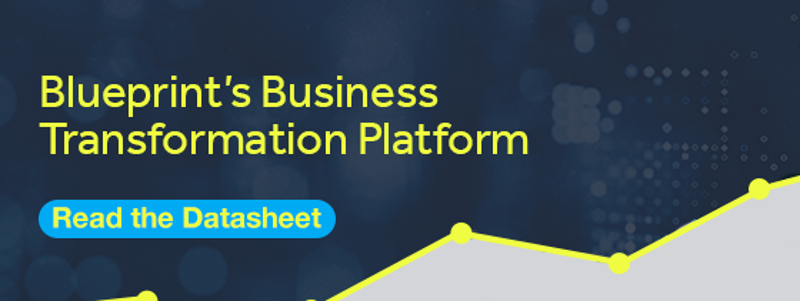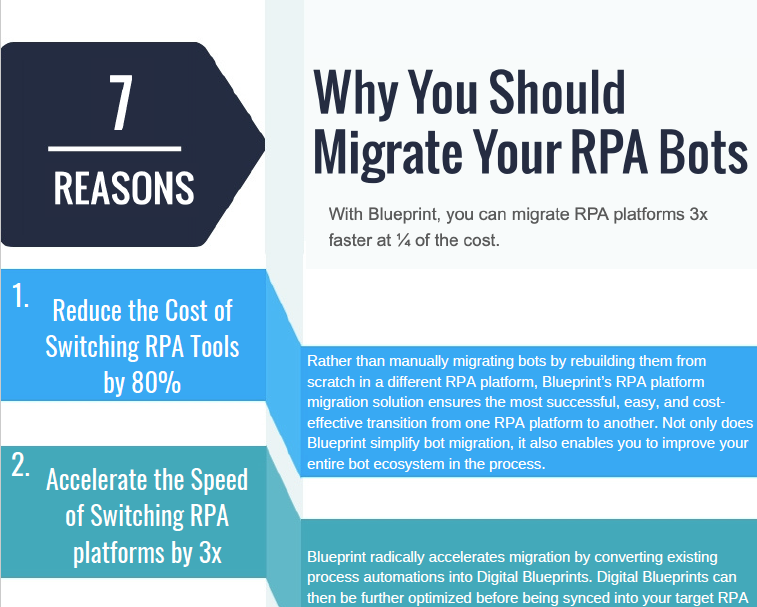RPA Vendors: How the Automation Software Market is Evolving
The RPA software market continues to grow exponentially—both in terms of revenue and vendors. According to Gartner, by mid-2021, there were more than 60 vendors within the RPA software landscape.
Regardless of where your organization is in its automation journey, the decision-making process has become much more complex.
Whether you’re a mature RPA program evaluating other vendors to migrate your digital workforce or a new adopter looking to get your automation efforts off the ground, there have never been more platforms to choose from with varying price points and capabilities.
Here’s how the RPA software market is evolving:
RPA Platform Features and Functionality are Increasing
The range of features and capabilities that RPA software vendors package into their offering is increasing, including key pieces of the automation toolchain such as process discovery tools.
Most importantly, in the effort to make automation more accessible to the average business user – seeing as the illusion that the citizen developer could drive RPA delivery never materialized – RPA platforms are also trying to simplify the development and deployment of automated processes.
The RPA software vendor to make the most strides in this category is Microsoft. Microsoft Power Automate boasts a more intuitive user interface with a user-friendly drag and drop experience that allows you to quickly build attended bots. It also provides a myriad of supported connectors that accelerate a business user's ability to build simple automations with an RPA and artificial intelligence (AI) workflow solution.
- Read more on the Impact, Benefits, and Value of Microsoft Power Automation as an RPA Platform
Because Microsoft is host to products and services that businesses are already using—like the Office365 suite, Azure servers, and Sharepoint—Power Automate is ideal for countless organizations looking to make automation even more seamless.
Microsoft’s entry into the RPA software market is one among a growing list of reasons why RPA programs are increasingly evaluating their current vendors or are already in the process of migrating their entire digital workforce to a more effective platform.
- Read more about migrating your digital bot portfolio with Blueprint
Complex, End-to-End Business Process Automation is the Next Frontier
The other motive behind increasing functionality and adding more robust features to RPA platforms is to enable hyperautomation in the effort to automate more complex, end-to-end business processes for even greater cost reduction and efficiency that RPA provides.
Business leaders are looking to move beyond simple, rule-based task automation with an intent to tackle more complete and complex business processes. As a consequence, the RPA tools that enable hyperautomation opportunities are being sought after.
New Vendors are Providing Pricing Models to Make Automation More Affordable and Accessible
According to Gartner’s Magic Quadrant for Robotic Process Automation, more RPA software vendors are starting to offer consumption-based pricing, unlocking the market and automation for small- and medium-sized businesses (SMB) to launch their own RPA efforts.
More competitive pricing models that can fit the specific needs of any business – like pricing based on timed utilization of bots, free RPA components out of the box, or unlimited bots at a fixed prize – has also contributed to the growing desire to switch RPA platforms. For many organizations, this is an alternative that better serves both their interests and budget.
Microsoft has arguably made the most waves in terms of pricing when they included Power Automate for free in Windows 10, creating a strong bid to dominate the small- to medium-sized (SMB) RPA market. It’s another reason we’re seeing a growing demand for RPA programs looking to switch from their current providers to Microsoft Power Automate with Blueprint’s RPA migration solution that delivers migration 3x as fast and reduces costs by 80% when compared to manual switches.
From there, customers are also leveraging Blueprint’s entire Business Transformation Platform that offers:
- Simplified Task Capture for accelerated process discovery, RPA candidate identification, and prioritization
- An intuitive automation design environment where the average business user and Citizen Designer can design automations with ease and automatically sync them with any RPA platform
- RPA governance capabilities to standardize automation practices
- RPA change management to enable proactive change management and optimize the lifecycle of your entire digital workforce
- And, a centralized location to consolidate all automated processes for increased visibility and control.
For more information on Blueprint's Business Transformation Platform, download the datasheet:

Share this
Recent Stories

INFOGRAPHIC: 7 Reasons Why You Should Migrate RPA Platforms with Blueprint

Automation Year in Review 2022


